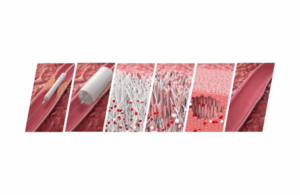The prospective, non-randomized feasibility study will enroll up to 10 patients at the Medical University of Graz in Austria and follow them for 24 months. Investigators used an endovascular approach to restore blood flow to the foot in the initial procedure.
The bioresorbable stent is made of porous microfibers meant to give immediate structural support, open the artery and allow the patient’s own cells to grow into the mesh. As new vascular tissue forms, the scaffold gradually dissolves and disappears.
“Our goal is to bring the next generation of stents with regenerative properties, to guide the body rebuilding functional arteries and improve long-term clinical outcomes,” CEO Bart Sanders said in a news release. “We are extremely proud reaching this first clinical milestone to show the potential of our technology in providing a durable solution for advanced peripheral artery disease.”

